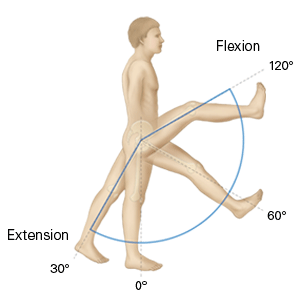Hip anatomy
The hip joint is a ball-and-socket joint located where the femur (thigh bone) meets the acetabulum of the pelvis. This joint plays a crucial role in supporting body weight and enabling movement, including walking, running, and climbing.
The femoral head, a smooth, rounded structure, fits into the acetabulum, a deep, cup-shaped socket. This design allows for a wide range of motion in multiple directions. Surrounding the joint is a capsule made of connective tissue, which is reinforced by ligaments that provide stability. The joint is lined with cartilage, which cushions the femoral head and acetabulum, reducing friction during movement.
Overall, the hip joint’s complex anatomy allows for both flexibility and strength, making it essential for daily activities and athletic performance


What is hip replacement surgery?
Hip replacement, also known as hip arthroplasty, is a surgical procedure in which a damaged or diseased hip joint is replaced with an artificial joint, known as a prosthesis. This surgery is commonly performed to relieve pain and improve function in individuals with severe hip arthritis or other hip joint disorders.
Indications for Hip Replacement
Hip replacement is typically recommended for patients experiencing: Severe pain that interferes with daily activities and quality of life, Limited mobility and difficulty walking or bending and Ineffective relief from conservative treatments (like medications, physical therapy, or injections).
Component of hip replacement
- Femoral Component:
- Stem: A metal rod inserted into the femur for stability.
- Femoral Head: A metal or ceramic ball that fits into the acetabulum, allowing smooth movement.
- Acetabular Component:
- Acetabular Cup: A cup-shaped component that replaces the natural hip socket, made of metal or polyethylene.
- Liner: Sometimes included, made of polyethylene or ceramic to reduce friction.
Types of Materials
- Metal: Used for the femoral head and stem for strength.
- Polyethylene: Used for the acetabular liner for low friction.
- Ceramic: Used in some designs for durability
What to be aware of after the procedures?
Recovery
- Hospital Stay: Patients typically stay in the hospital for a few days post-surgery.
- Rehabilitation: Physical therapy begins soon after surgery to regain strength and mobility.
- Home Care: Many patients can return home with assistance and continue their rehabilitation.
Regardless of the approach, recovery and rehabilitation protocols are generally similar, focusing on restoring strength, flexibility, and function while minimizing complications.
to maintain a hip prosthesis, it’s essential to follow your surgeon’s post-operative guidelines regarding weight-bearing and activity levels, and to attend regular check-ups to monitor the prosthesis.
Engaging in physical therapy can strengthen surrounding muscles and improve mobility, while maintaining a healthy weight through a balanced diet and low-impact exercises like swimming and walking can reduce stress on the joint.
Avoid high-impact activities such as running, and stay alert for any symptoms like pain or swelling, reaching out to your doctor if they occur. Additionally, using assistive devices like canes or walkers can enhance stability as needed, ensuring your hip prosthesis remains functional and supports an active lifestyle.


Will I return to my normal life style?
Most patients can return to normal activities after hip replacement surgery, but the timeline varies. Initially, activities may be limited, and rehabilitation is crucial for regaining strength and mobility. Many people resume daily activities, such as walking and light chores, within a few weeks. More physically demanding activities, like running or heavy lifting, may take longer and should be discussed with a healthcare provider. Overall, with proper care and rehabilitation, many patients enjoy improved mobility and reduced pain, allowing them to return to a fulfilling lifestylees or walkers can enhance stability as needed, ensuring your hip prosthesis remains functional and supports an active lifestyle.
How long will my implant last?
The lifespan of a hip replacement can vary based on several factors, including the type of prosthesis used, the patient’s age, activity level, and overall health. Generally, hip implants are designed to last between 15 to 20 years. Some patients may experience longer-lasting results, especially with advances in materials and surgical techniques. Regular follow-up appointments and maintaining a healthy lifestyle can help extend the lifespan of the prosthesis. However, if issues arise or wear occurs, revision surgery may be necessary.





